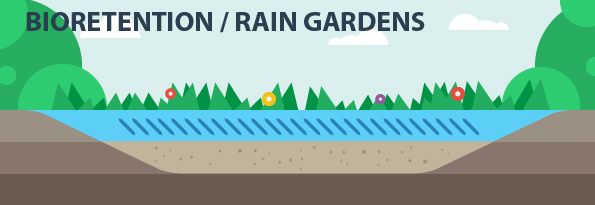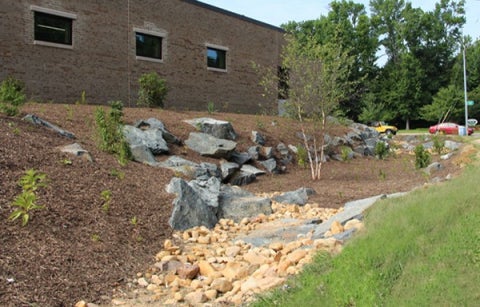Savage Branch Library Restoration

Parts of the Chesapeake Bay watershed contain a high percentage of impervious cover – paved or other hard surfaces such as roofs and roadways that prevent rain water from being absorbed into the ground. Instead, water runs along these surfaces, collecting trash and substances such as motor oil, lawn fertilizers, and pesticides. This polluted stormwater flows into streams and rivers, where it threatens aquatic ecosystems and public health.
Effective stormwater management, on the other hand, creates safe paths for polluted runoff to be captured and filtered through the ground before it reaches waterways. This helps keep the environment clean and our communities healthy!

Project location: Laurel, MD
Problem: The Savage Branch Library in Laurel serves Howard County residents and includes a STEM Education Center. The large library property contained few trees or landscaping elements and experienced frequent drainage issues.
Solution: To improve drainage and model smart stormwater management, the library site was retrofitted with permeable architectural pavers and innovative “stormplanters” that both provide attractive seating for library patrons and contain native wetland plants to capture and filter rainwater. Additionally, a new 30,000 square foot urban forest was planted to absorb rain, provide shade and habitat, and improve water quality. The library is now a testimony to what its STEM Center teaches, and it serves as an outdoor classroom for students to learn about stormwater runoff solutions.
Scale: 1.6 acres, previously highly impervious
Cost: $416,464
Funding sources: Howard County Watershed Protection and Restoration Fund
Partners: Biohabitats Inc.; Howard County Library System; Howard County Office of Environmental Sustainability
More information: biohabitats.com/projects/savage-branch-environmental-site-design/




